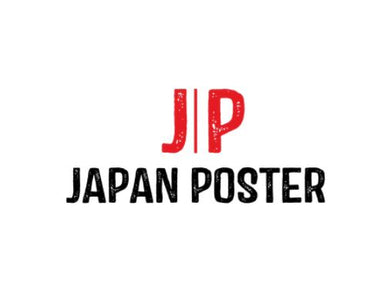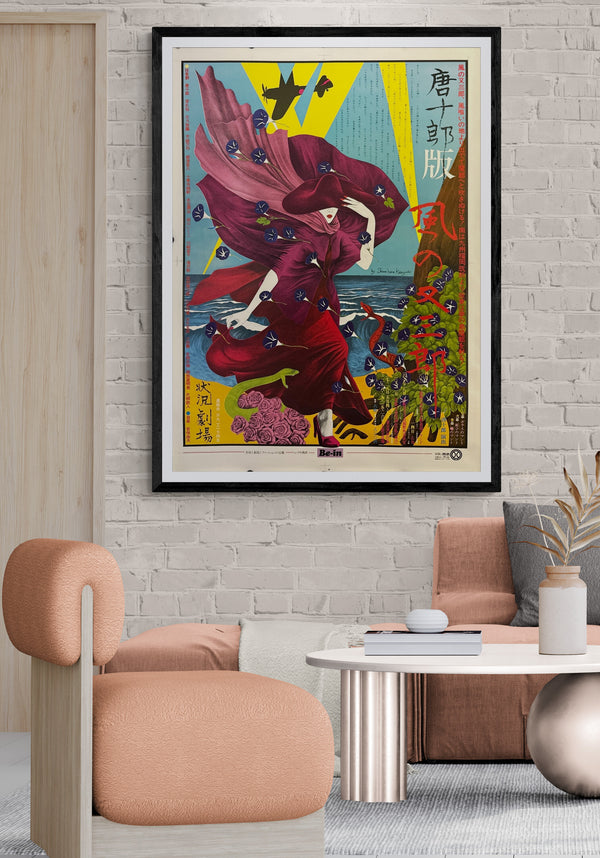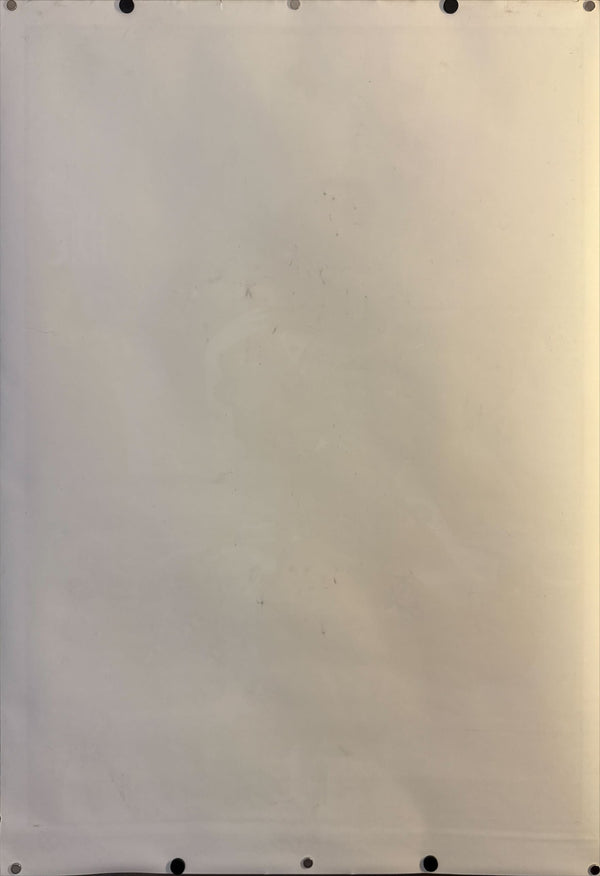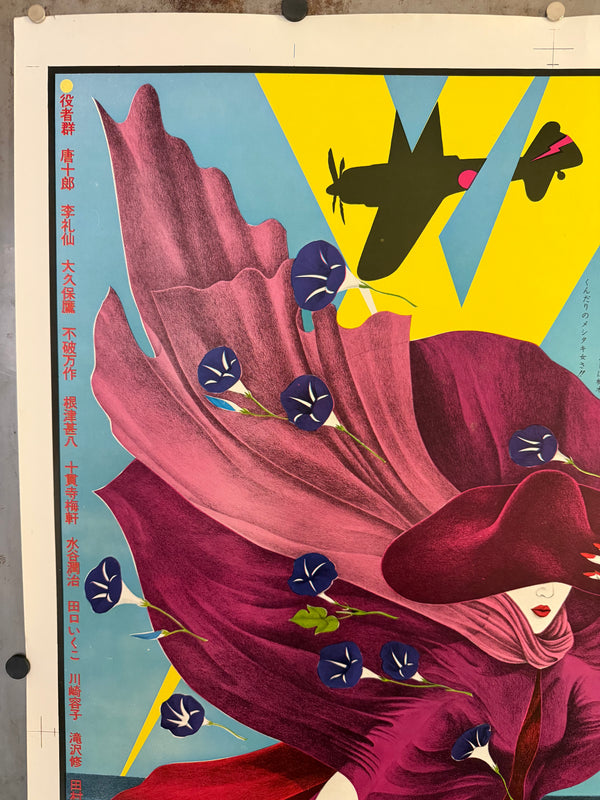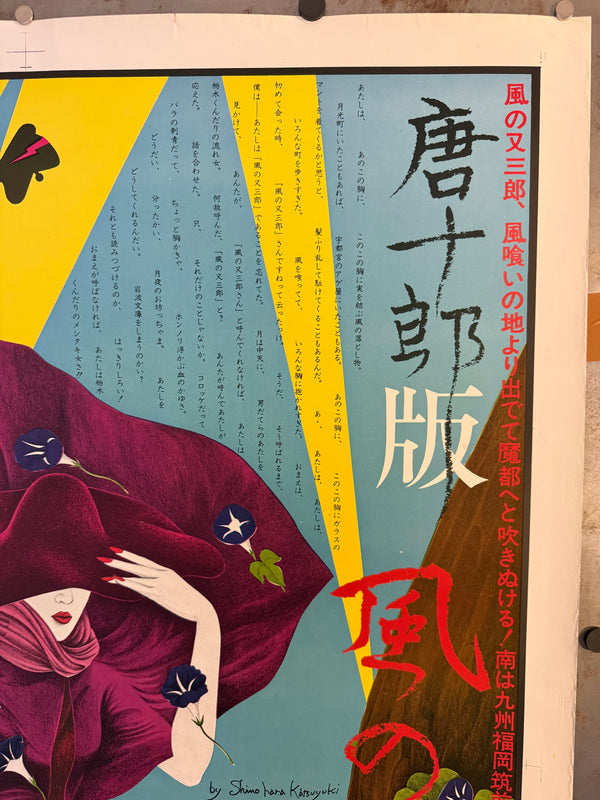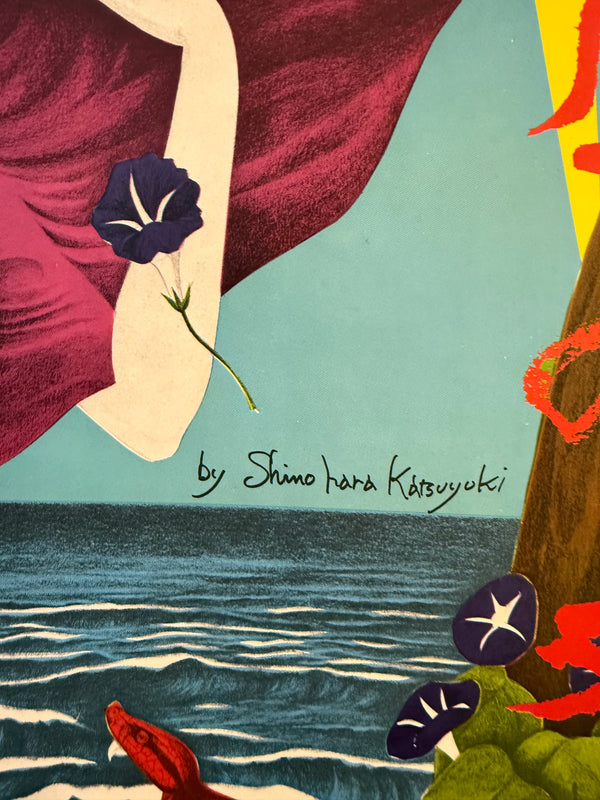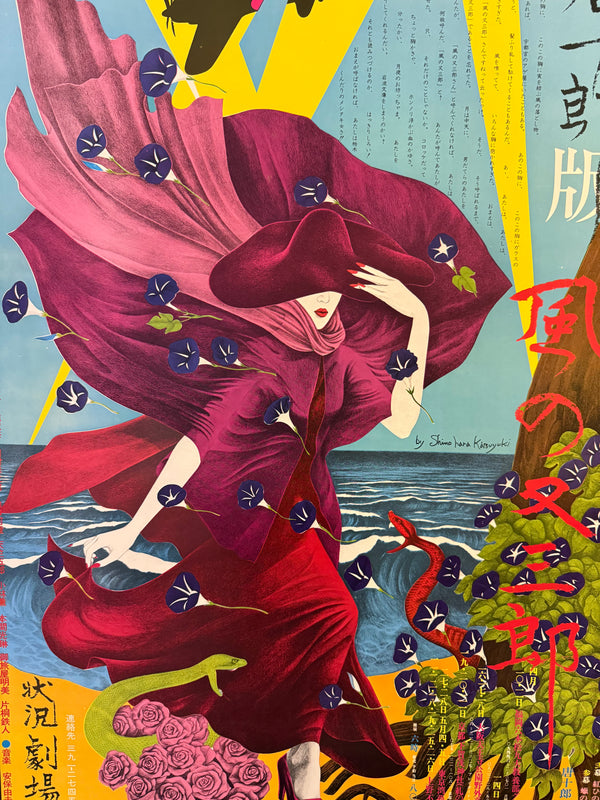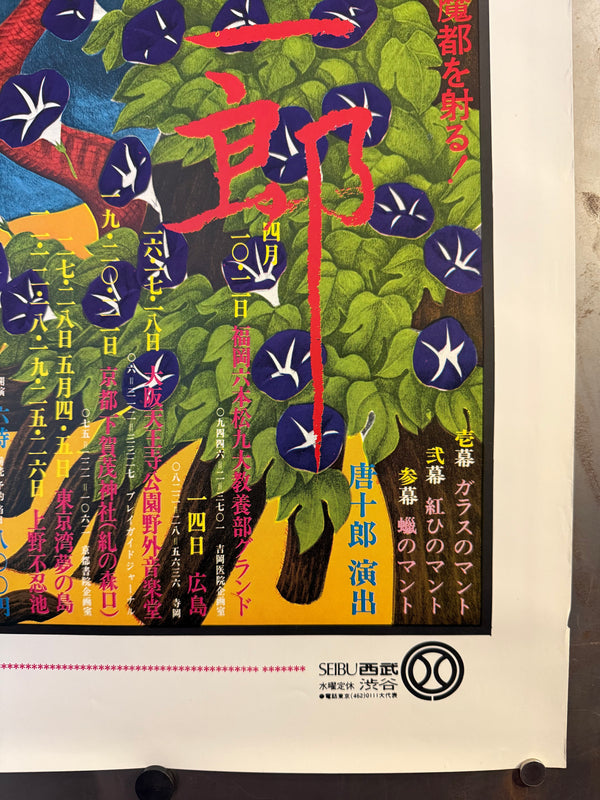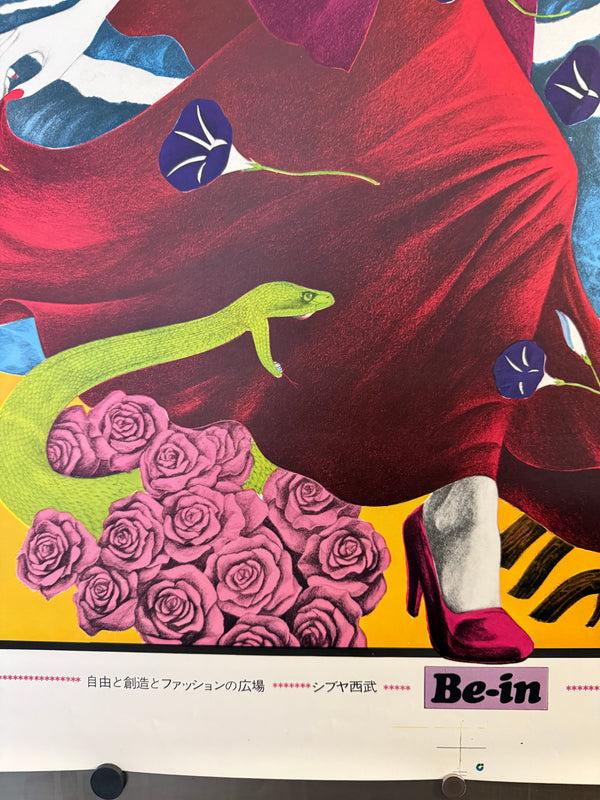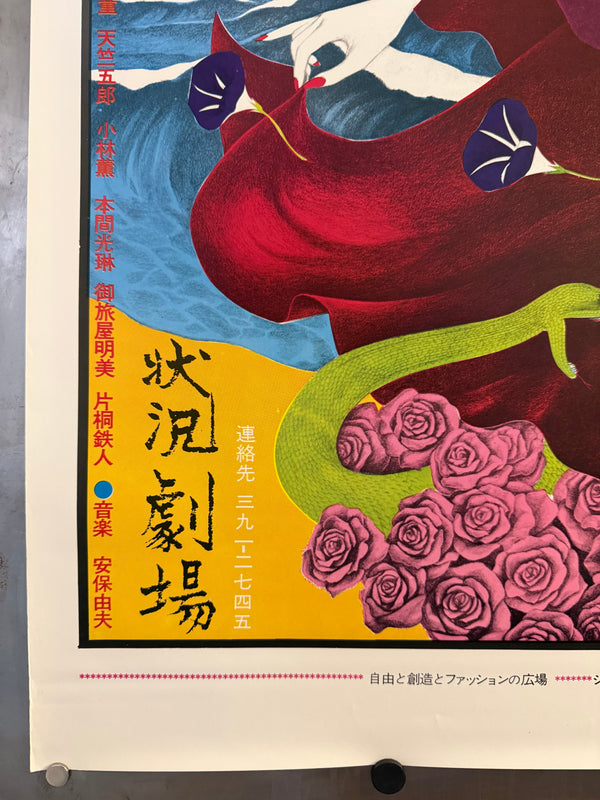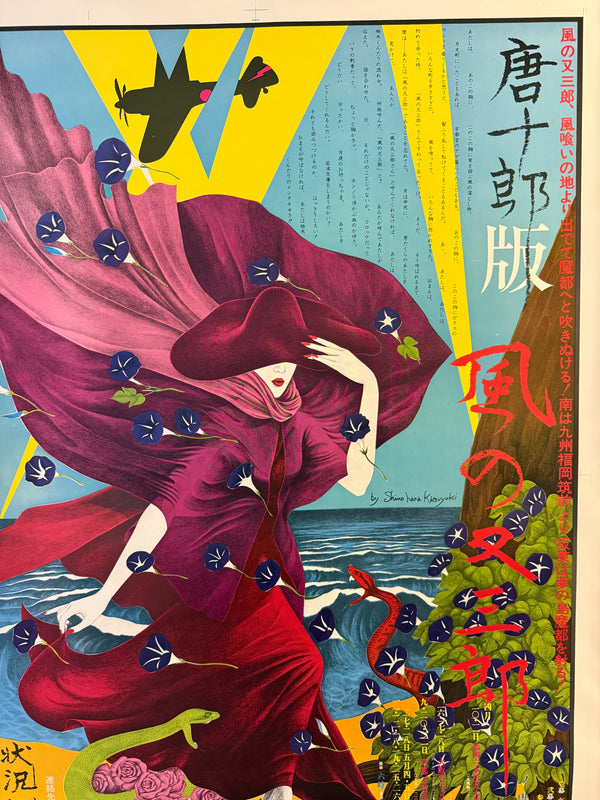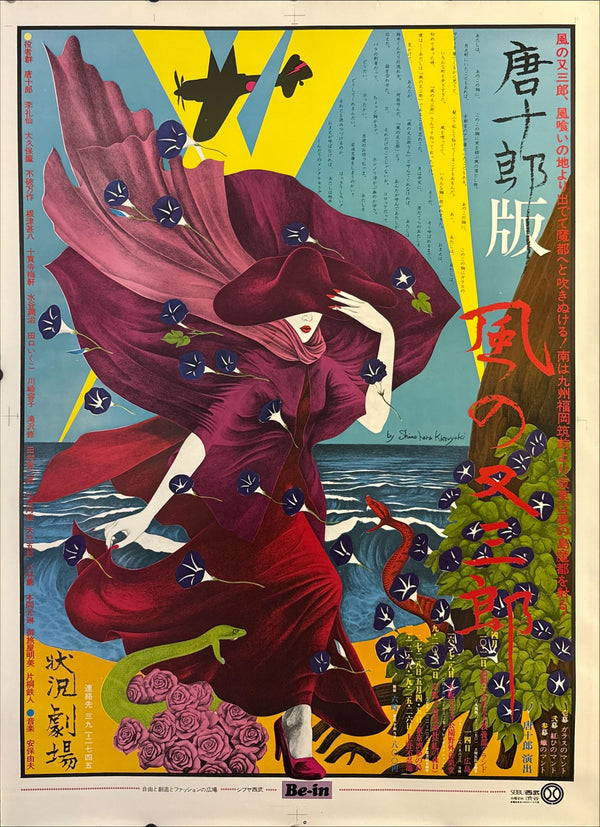
Katsuyuki Shinohara (篠原勝之 / Katsuyuki Shinohara) - Jōkyō Gekijō (Situation Theatre) — Kara‑ban Kaze no Matasaburō 「唐十郎版 風の又三郎」 (“Matasaburō of the Wind”), Japanese Contemporary Art Poster, Original Offset Screen 1974, Ultra Rare, Size (c.78 x 108cm)
Jōkyō Gekijō (Situation Theatre) — Kara‑ban Kaze no Matasaburō 「唐十郎版 風の又三郎」 (“Matasaburō of the Wind”)
Written & Directed by Jūrō Kara (唐十郎) | Poster art: Katsuyuki Shinohara (篠原勝之 / Katsuyuki Shinohara)
Original B1 theatre poster | 1974 | Offset lithograph | Approx. 80 × 110 cm
Kara’s legendary tent troupe Jōkyō Gekijō premiered Kaze no Matasaburō in 1974, a high‑water mark of Japan’s angura (underground) theatre. The work reimagines Kenji Miyazawa’s tale as a mythic love story, first staged under the company’s roving Red Tent.
This large-format sheet is a rare Jōkyō Gekijō poster for Kara‑ban Kaze no Matasaburō. The artwork is signed “by Shinohara Katsuyuki” within the image. Shinohara—also known as KUMA—is a multidisciplinary artist (sculpture, graphics, fiction) who served as poster and stage designer for Jōkyō Gekijō from 1973–79. His theatre graphics, including this title, are frequently featured in museum surveys of Japan’s avant‑garde poster art.
Design & typography
Surreal tableau. A veiled woman in a wind‑lashed crimson cloak and sweeping hat strides along a surf‑line. Morning‑glory blossoms whirl across the sheet; below are clustered roses and a bright green serpent, with a red snake rising from the waves. Overhead, WWII‑era aircraft silhouettes cut through yellow shards of light—one marked by a pink lightning bolt. The image’s dream‑logic fits Kara’s theatre of metamorphosis and disguise.
Title as gesture. The title 「風の又三郎」 is brushed in vertical ferrous red at right, shouldered by 「唐十郎版」 in white—announcing Kara’s own “version.”
Troupe masthead. 「状況劇場」 runs boldly down the left margin, a hallmark of Red Tent posters.
Acts. A right‑side column lists the three acts—一幕「ガラスのマント」 / 二幕「紅ひのマント」 / 参幕「鰻のマント」—underscoring the production’s shifting identities.
Copy & colophons. Micro‑copy in the blue field reads as a first‑person reverie; the lower margin bears “Be‑in” and Seibu Shibuya (西武 渋谷) shop marks, pointing to department‑store design outlets that retailed avant‑garde graphics in the 1970s.
Performance & ticketing copy (translated from the poster)
Spring tour schedule with April–May dates is printed in the lower‑right block, listing stops that include Kyoto (Shimogamo Shrine—Tadasu‑no‑Mori) and Hiroshima, with additional Kyūshū dates noted. (Kyoto’s Tadasu‑no‑Mori is documented for the 1974 run; later histories repeatedly cite the 1974 Red Tent premiere.)
Context: theatre posters as art
Posters for angura troupes were printed in small runs for fly‑posting and tent sales; survival rates are low. Today they’re collected and exhibited as stand‑alone graphic artworks—this Shinohara design appears in surveys such as PARCO’s showcases of avant‑garde poster masterpieces and in national digitization projects of modern theatre posters.
Condition
Excellent, large B1 example with rich inks and a clean, satiny surface. Minor, normal edge touches only; printer’s trim and registration marks present; no folds, losses or repairs visible in hand. An exceptionally well‑preserved Red Tent poster of impressive scale.
Certificate of Authenticity included.
Please examine the provided detail images—this is the exact poster offered.
